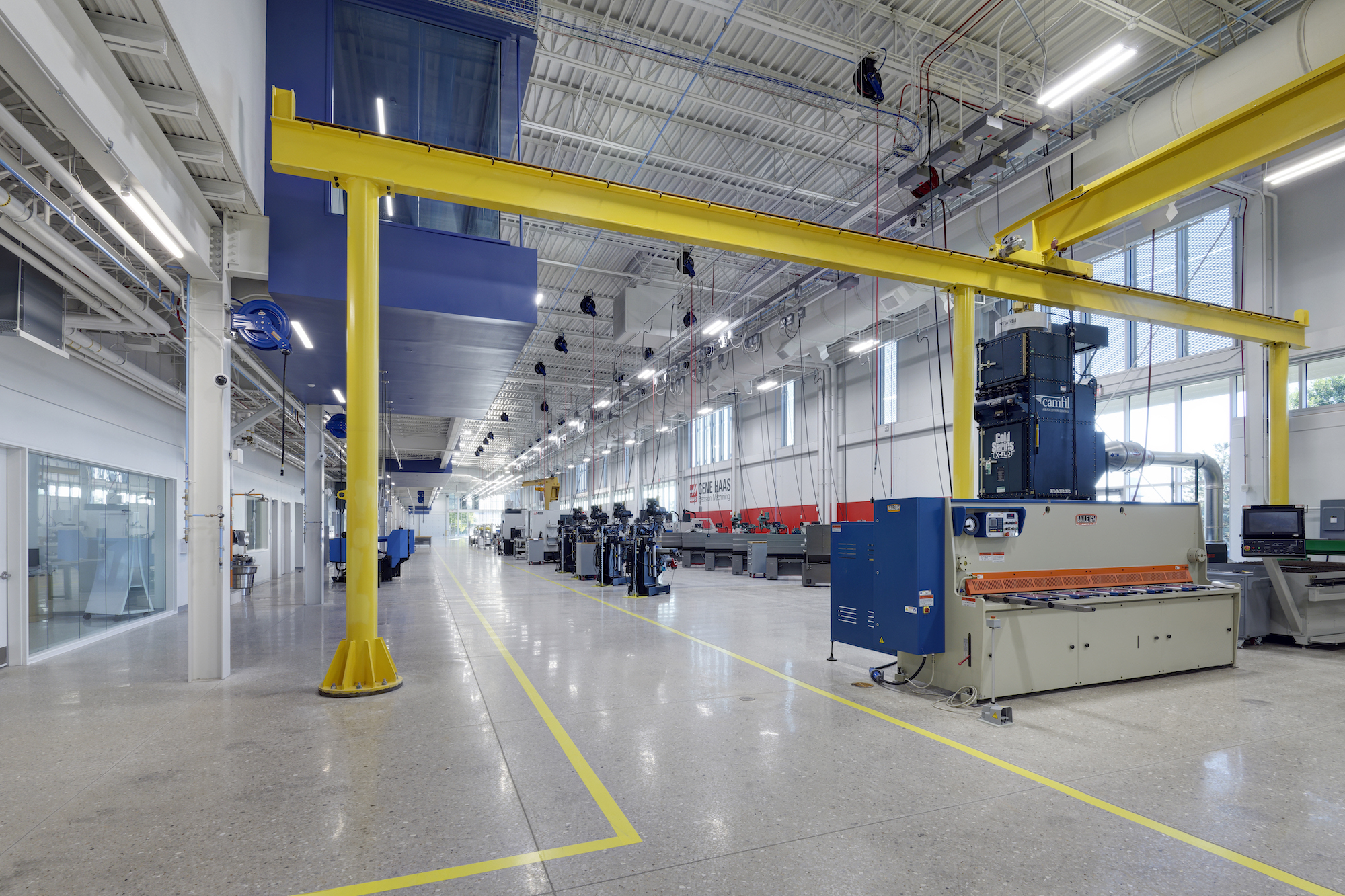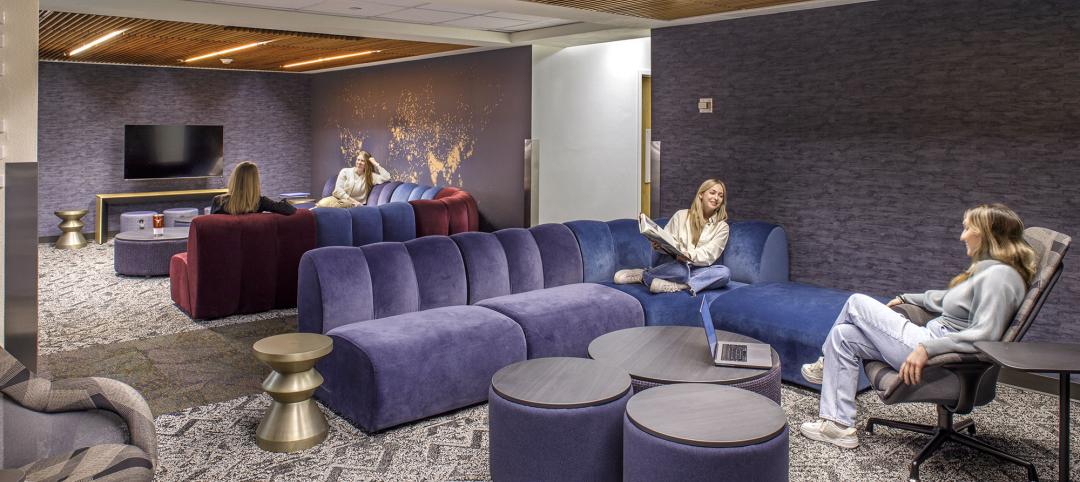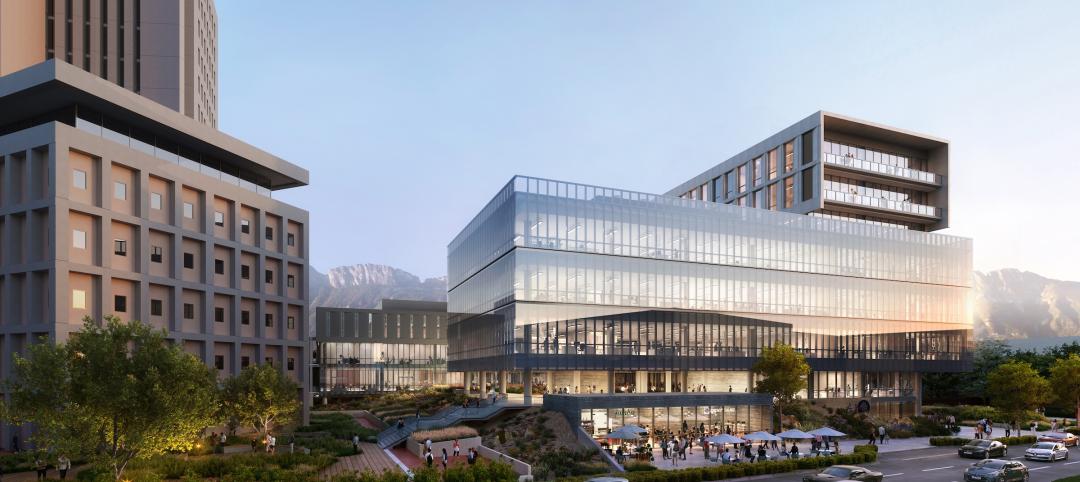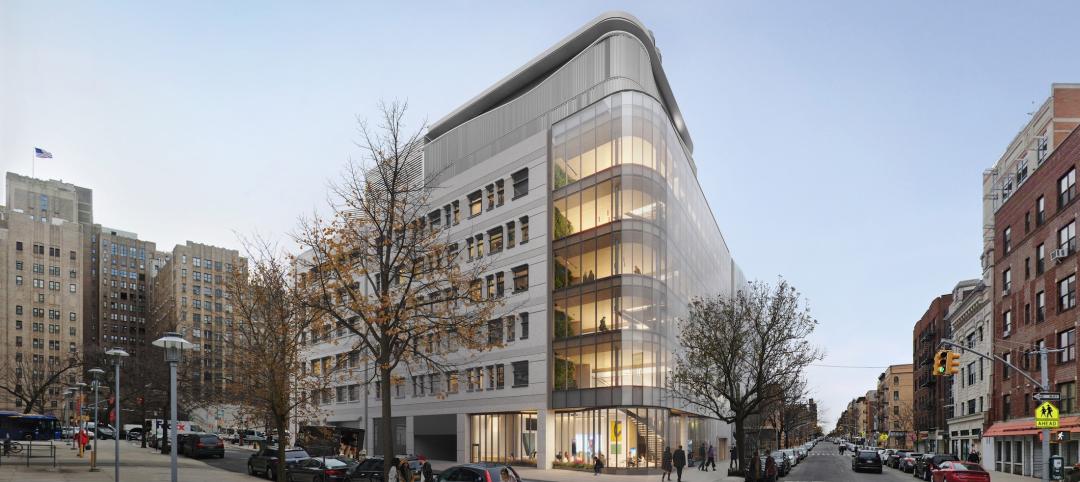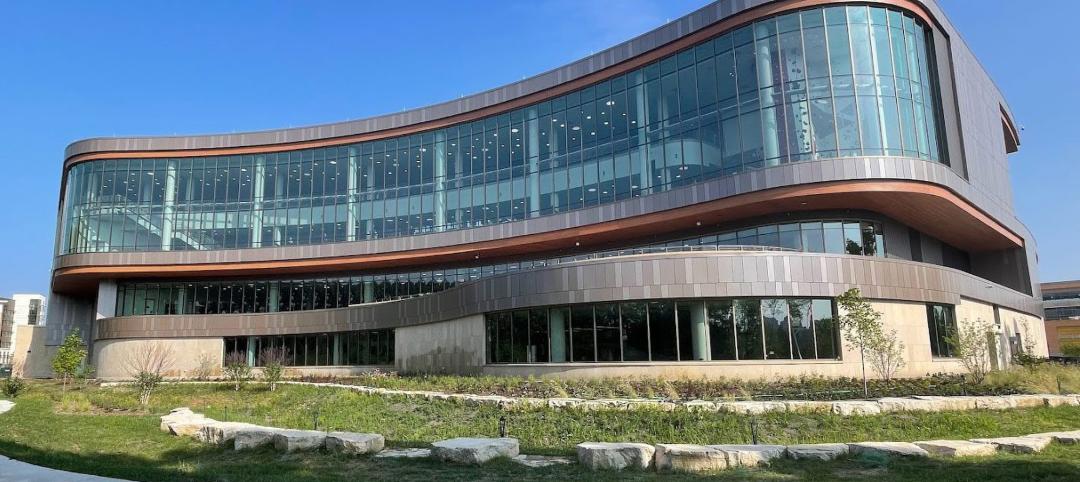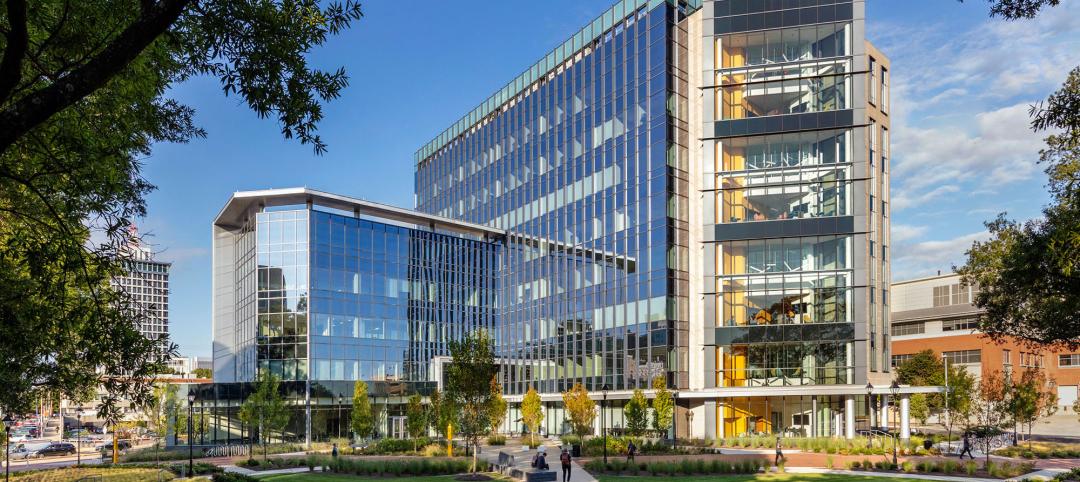The new Robert W. Plaster Center for Advanced Manufacturing at Ozarks Technical Community College in Springfield, Mo., is a first-of-a-kind educational asset in the region. The 125,000-sf facility will educate and train a new generation in high tech, clean manufacturing and fabrication.
Strong, metallic materials and geometric forms make up the shining facade, creating a modern, creative feel. Flexibility was a key goal of the program; thus, the Center is designed to be open, with tracks for movable walls to adjust to varying class sizes and new configurations.
The building’s core is a workshop high bay area, featuring more than 30,000 sf of active learning environments that are double- and triple-height, encased in steel and glass. This design element puts the work of students and industry partner collaboration on display.
These spaces are stocked with advanced equipment, including 3D printers, laser cutters, robotic welders, computer-aided lathes, mechatronics stations, and an overhead gantry crane.
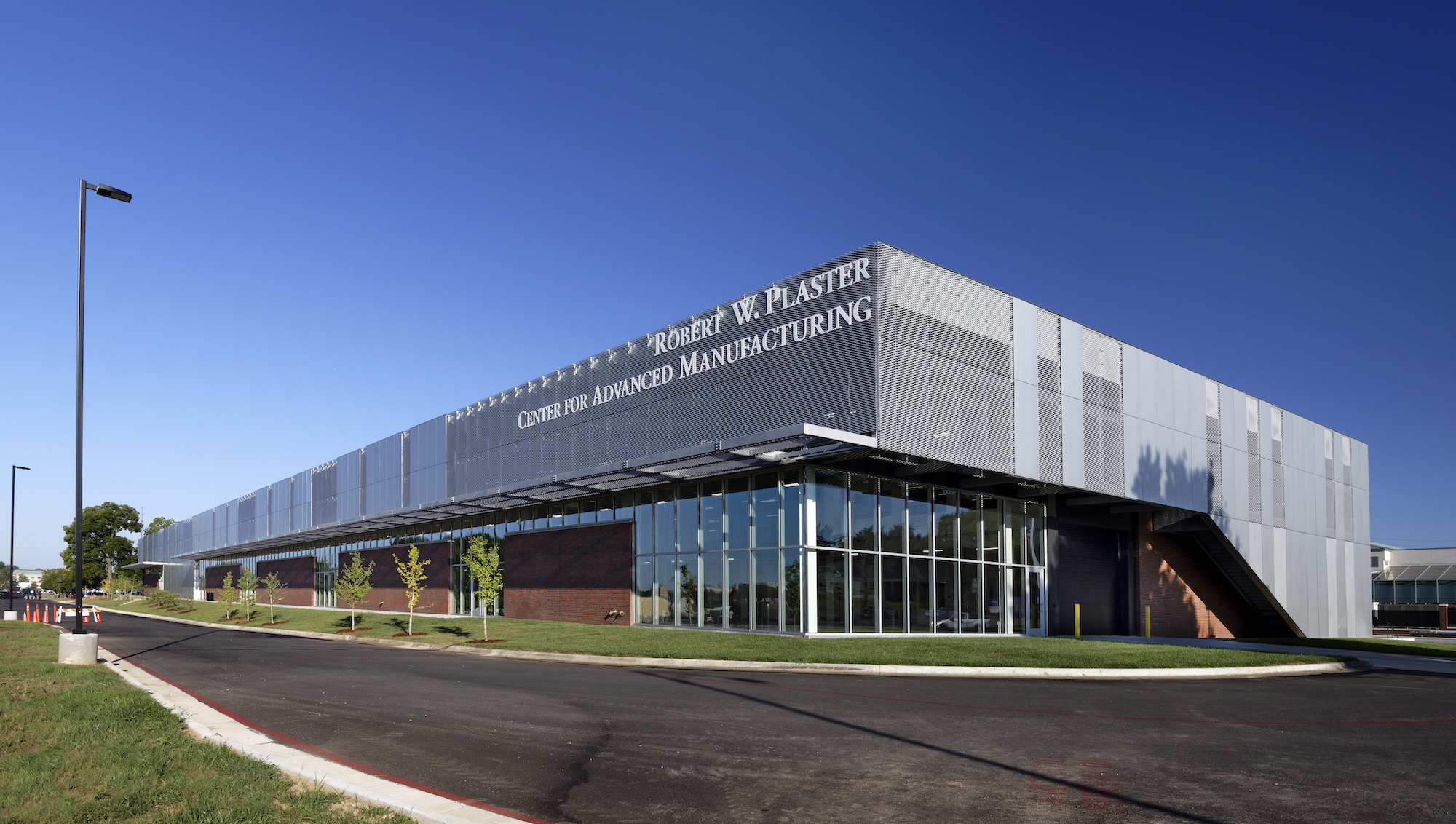
Classrooms are arranged alongside the high bay for seamless transitions from class to lab, while the glass collaboration zones overlook a 500-foot-long high bay space that is leasable to relocating or start-up companies. This area fronts one of Springfield’s main thoroughfares.
The new facility occupies a long, skinny site, and needed to provide tractor trailer access at multiple points. This created a design challenge to fit in with the pedestrian-friendly campus.
Like stitches holding different pieces of fabric together, the places between academic spaces pull together the large, open spaces full of glass and steel with playful, warm wood details bringing warmth to quiet study spaces. The flexible design encourages and supports both short- and longer-term training opportunities with a range of learning environments, including:
- Specialized hands-on learning environments
- Customizable simulation training centers
- Long-distance learning space
- Research and development labs
- Designated process-improvement space
- Business incubation test centers
- A large high-bay environment for industry-led projects.
A large assembly stair occupies the two-story lobby, flooded with daylight and equipped for presentations to large groups from busloads of middle school students to corporate investors.
On the project team:
Owner and/or developer: Ozarks Technical Community College
Design architect: Perkins and Will
Architect of record: Dake Wells Architecture
MEP engineers: Antella Consulting Engineers (electrical engineer); Henderson Engineers (mechanical, plumbing, fire protection engineer)
Structural engineer: J&M Engineering
General contractor/construction manager: Crossland Construction


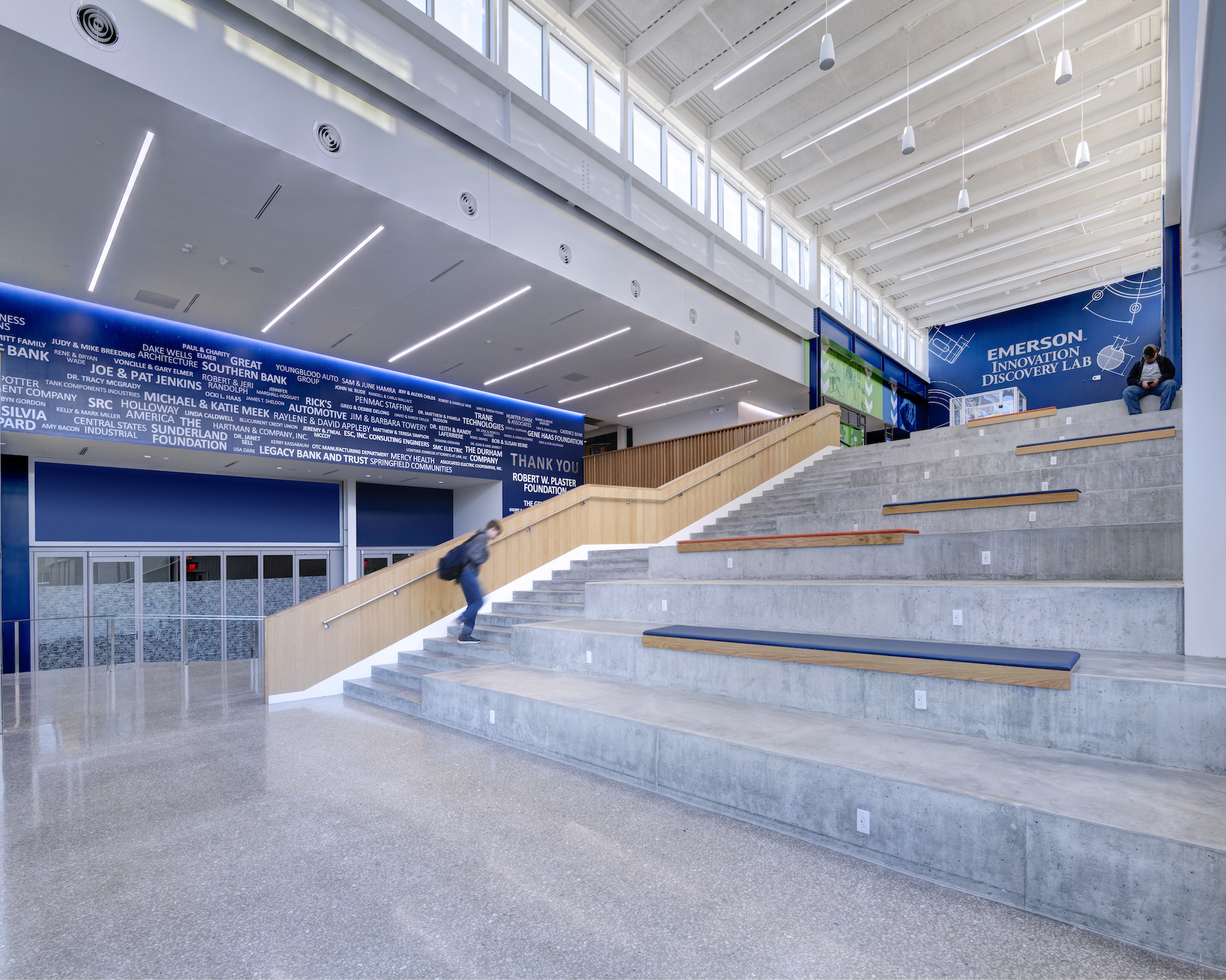
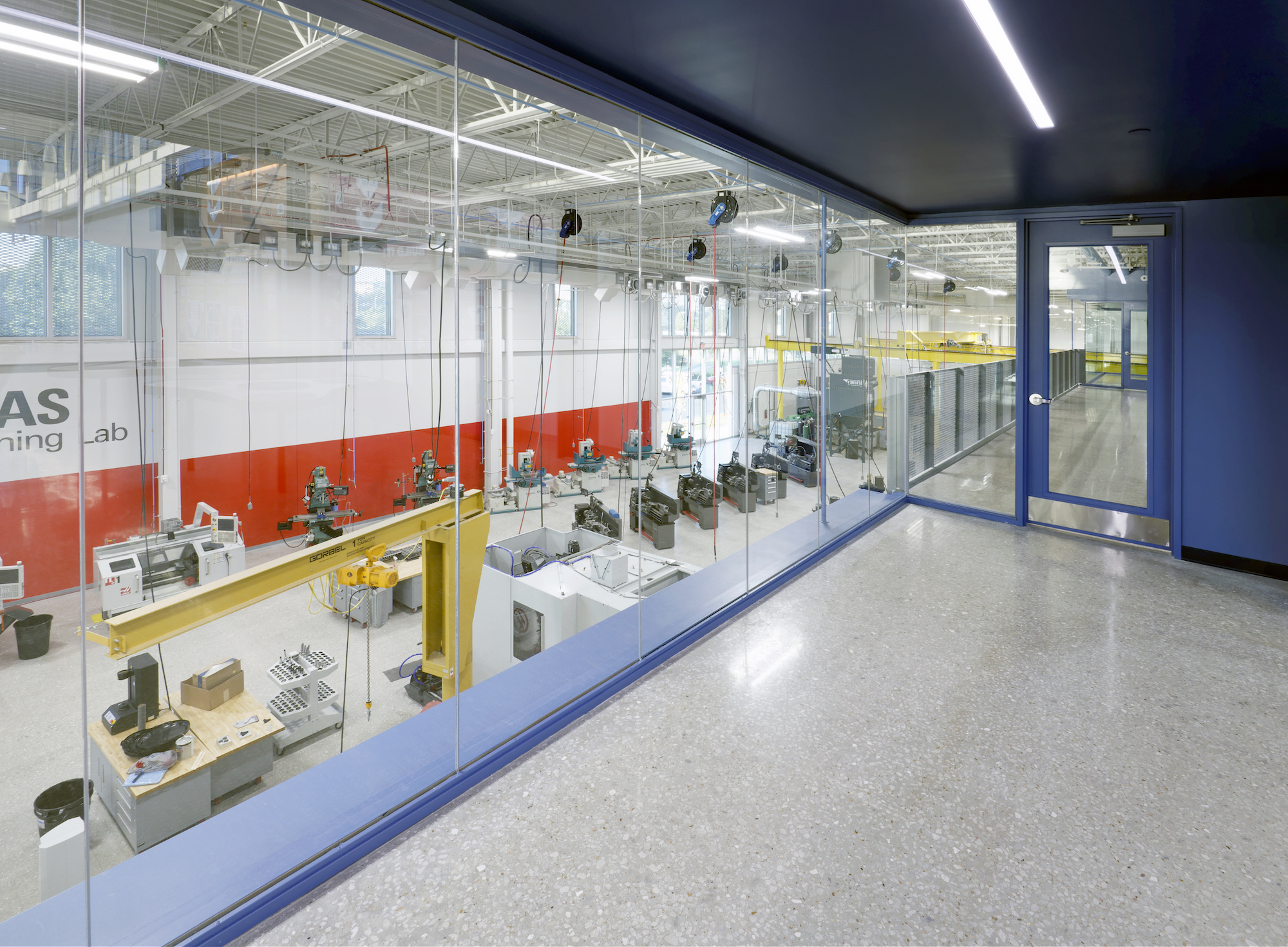
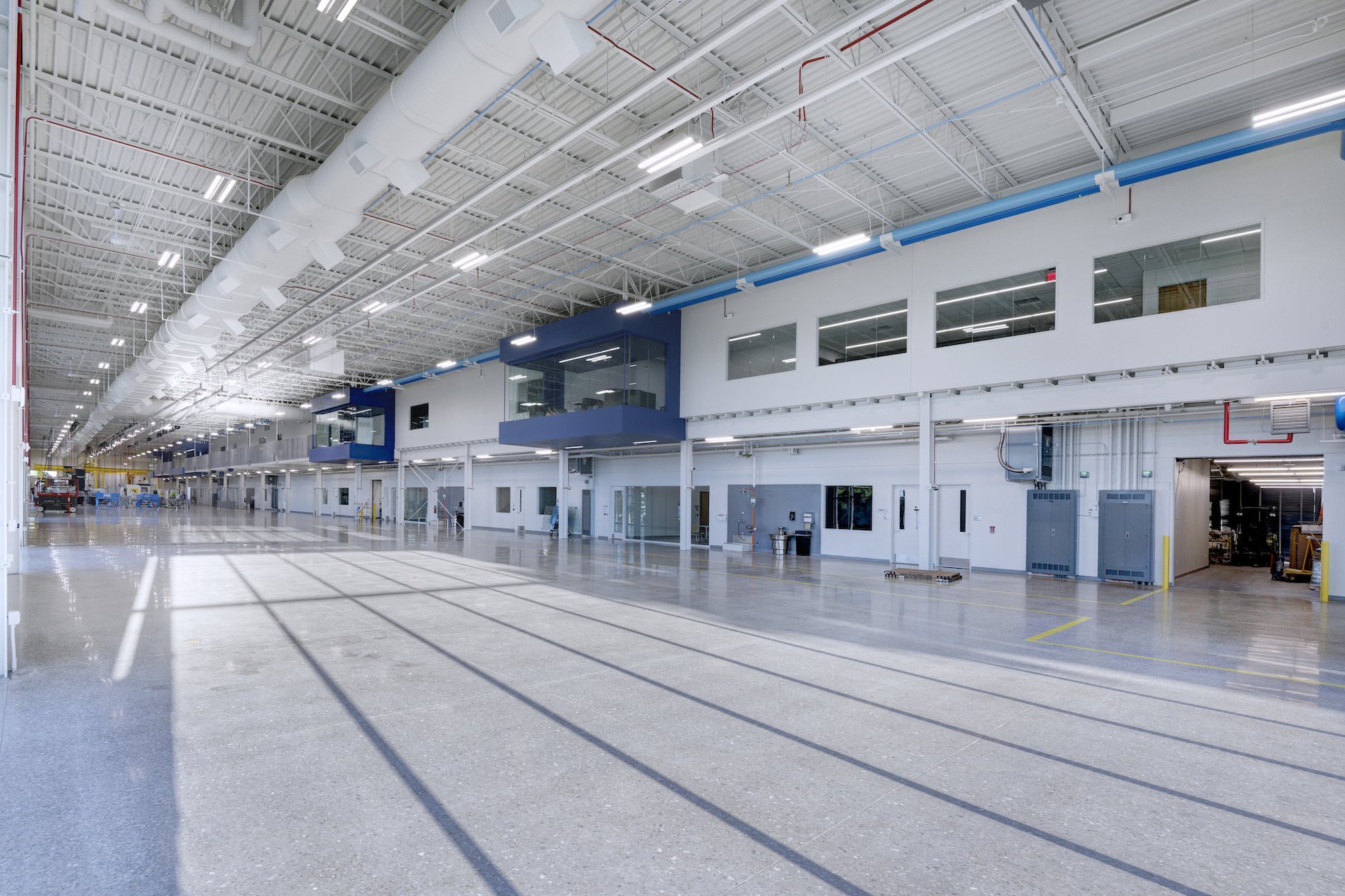
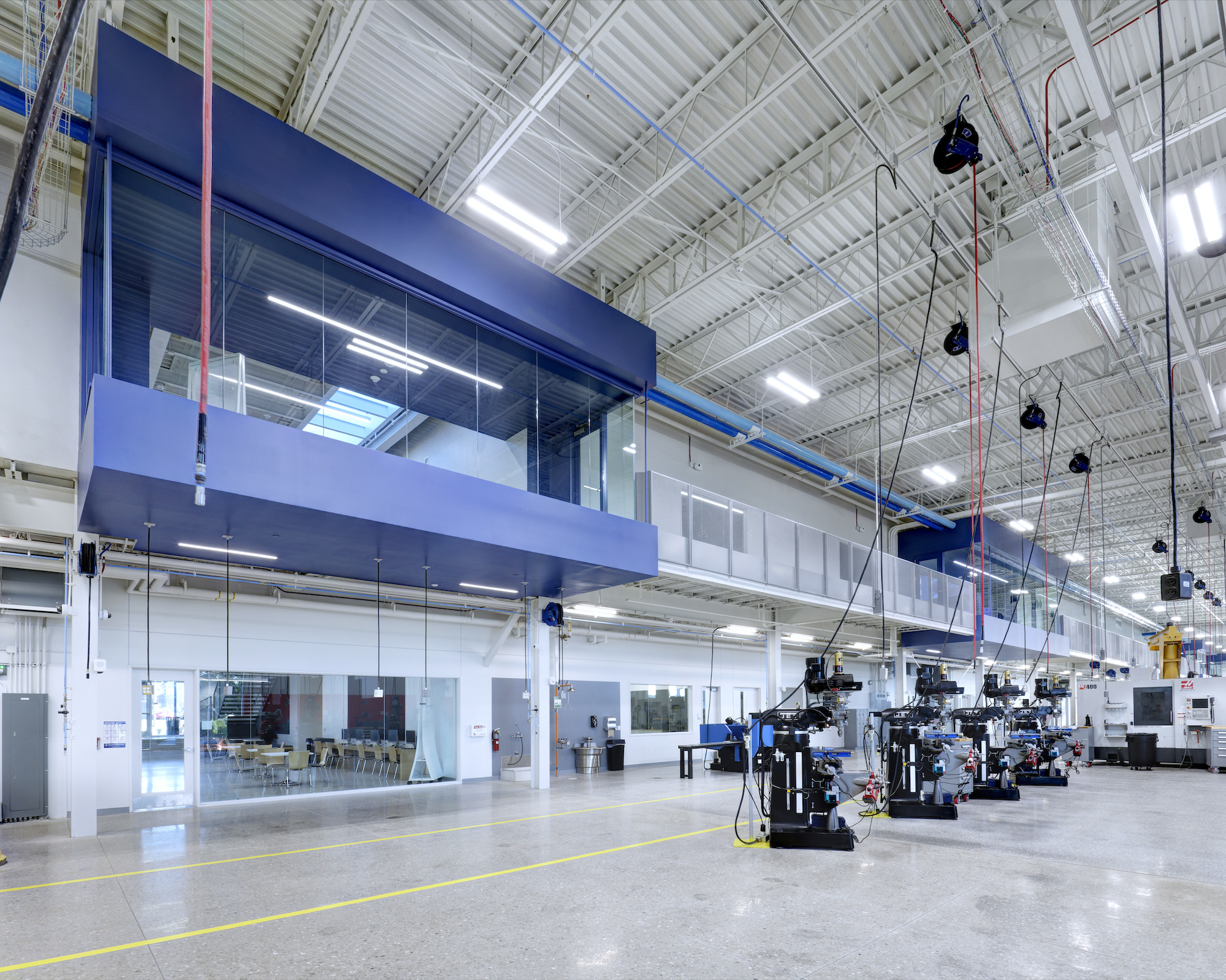
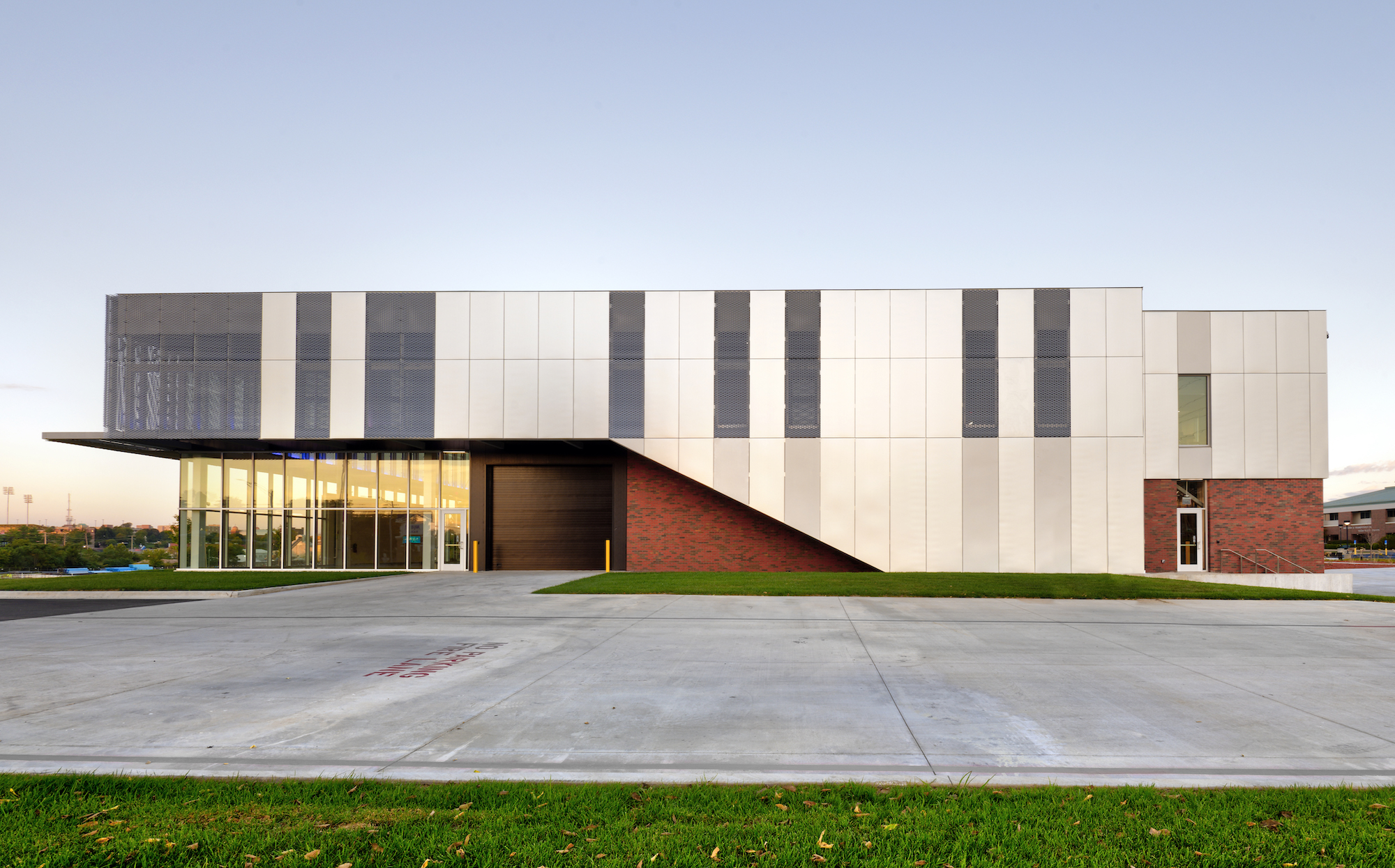
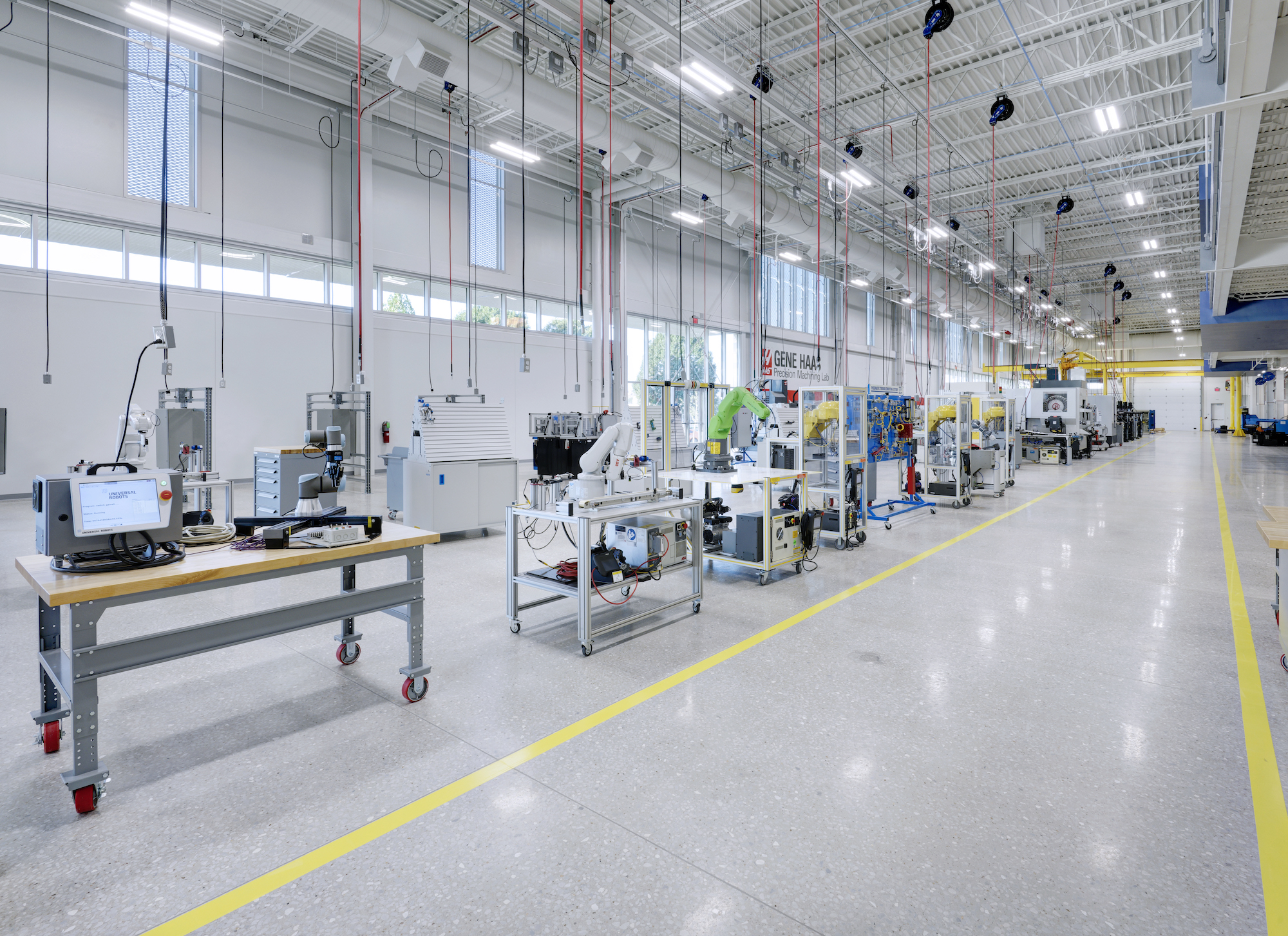
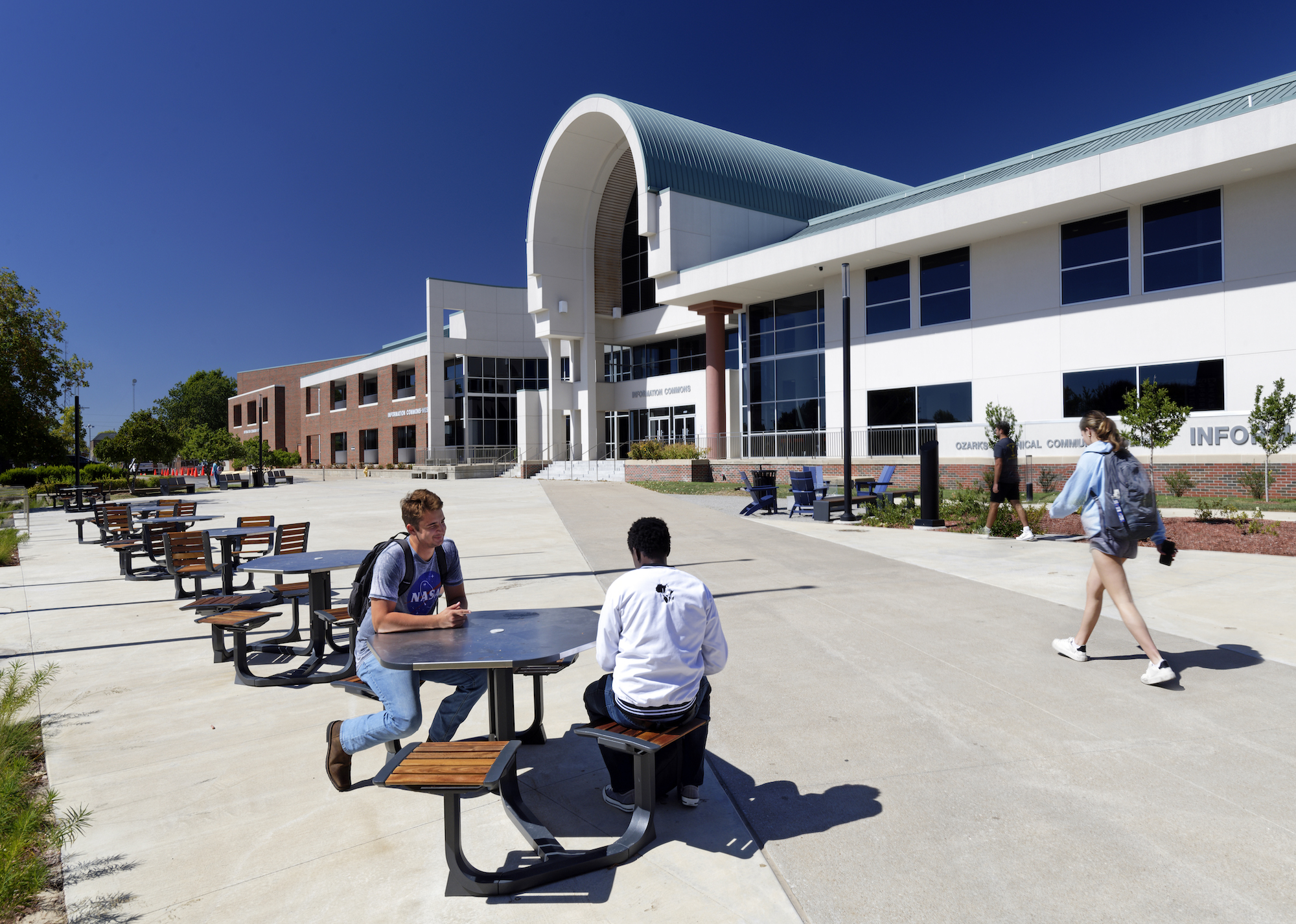
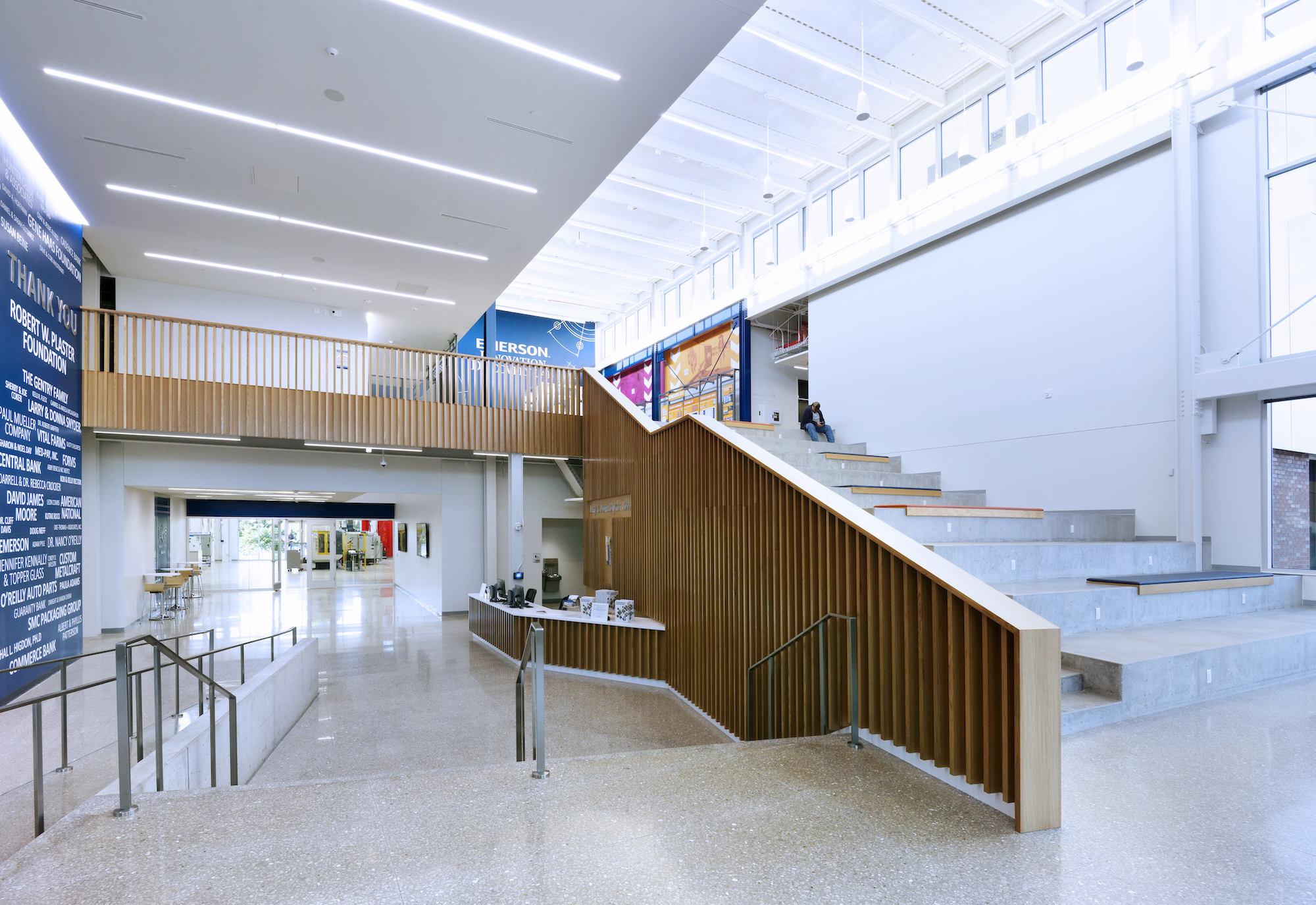
Related Stories
Student Housing | May 3, 2024
Student housing construction dips in the first quarter of 2024
Investment in college dorms dipped slightly in the first quarter of 2024, but remains higher than a year ago.
Student Housing | May 1, 2024
Pfluger Architects unveils renovated student lounges at all-girls dormitory
In a step toward updating and modernizing on-campus housing to attract a range of students, Texas-based Pfluger Architects renovated the student lounges in Kinsolving Hall, a five-story, all-girls dormitory at The University of Texas at Austin initially built in 1958.
Mass Timber | Apr 25, 2024
Bjarke Ingels Group designs a mass timber cube structure for the University of Kansas
Bjarke Ingels Group (BIG) and executive architect BNIM have unveiled their design for a new mass timber cube structure called the Makers’ KUbe for the University of Kansas School of Architecture & Design. A six-story, 50,000-sf building for learning and collaboration, the light-filled KUbe will house studio and teaching space, 3D-printing and robotic labs, and a ground-level cafe, all organized around a central core.
Healthcare Facilities | Apr 16, 2024
Mexico’s ‘premier private academic health center’ under design
The design and construction contract for what is envisioned to be “the premier private academic health center in Mexico and Latin America” was recently awarded to The Beck Group. The TecSalud Health Sciences Campus will be located at Tec De Monterrey’s flagship healthcare facility, Zambrano Hellion Hospital, in Monterrey, Mexico.
University Buildings | Apr 10, 2024
Columbia University to begin construction on New York City’s first all-electric academic research building
Columbia University will soon begin construction on New York City’s first all-electric academic research building. Designed by Kohn Pedersen Fox (KPF), the 80,700-sf building for the university’s Vagelos College of Physicians and Surgeons will provide eight floors of biomedical research and lab facilities as well as symposium and community engagement spaces.
Sports and Recreational Facilities | Apr 2, 2024
How university rec centers are evolving to support wellbeing
In a LinkedIn Live, Recreation & Wellbeing’s Sadat Khan and Abby Diehl joined HOK architect Emily Ostertag to discuss the growing trend to design and program rec centers to support mental wellbeing and holistic health.
Student Housing | Feb 21, 2024
Student housing preleasing continues to grow at record pace
Student housing preleasing continues to be robust even as rent growth has decelerated, according to the latest Yardi Matrix National Student Housing Report.
University Buildings | Feb 21, 2024
University design to help meet the demand for health professionals
Virginia Commonwealth University is a Page client, and the Dean of the College of Health Professions took time to talk about a pressing healthcare industry need that schools—and architects—can help address.
Higher Education | Feb 9, 2024
Disability and architecture: ADA and universal design at college campuses
To help people with disabilities feel part of the campus community, higher education institutions and architects must strive to create settings that not only adhere to but also exceed ADA guidelines.
Laboratories | Jan 25, 2024
Tactical issues for renovating university research buildings
Matthew Plecity, AIA, ASLA, Principal, GBBN, highlights the connection between the built environment and laboratory research, and weighs the benefits of renovation vs. new construction.


